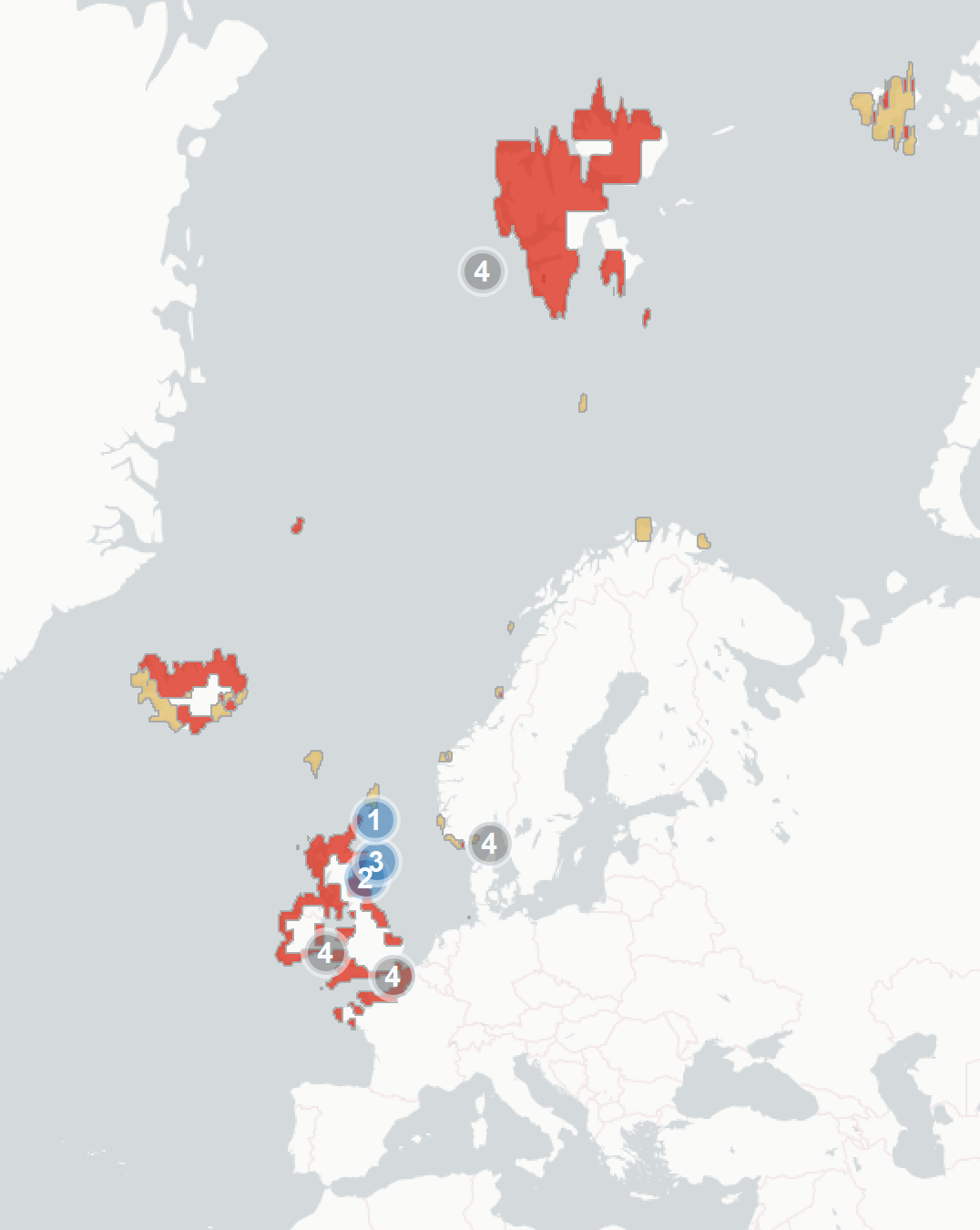Northern Fulmar (Fulmarus glacialis): vulnerability to climate change
Evidence for exposure
Potential changes in breeding habitat suitability:
-
Current breeding area that is likely to become less suitable (80% of current range)
-
Current breeding area that is likely to remain suitable (20%)
-
Current breeding area that is likely to become more suitable (0%)
Current impacts to Northern Fulmars attributed to climate change:
-
Neutral Impact: Warmer winters have resulted in lower adult survival and lower reproductive success in the following year. Mechanism unknown, potentially could be related to marine productivity
-
Neutral Impact: Fulmars are arriving from migration and laying later in the year. These changes correlate with changes in temperature in the breeding area, but may also be related to environmental change in non-breeding areas.
-
Negative Impact: Higher sea temperatures typically correlate with lower breeding success. Mechanism unknown, but likely mediated through prey availability. Continued warming may cause long-term declines in populations.
Predicted changes in key prey species:
-
Key prey species are likely to decline in abundance in the Irish Sea, the English Channel, the southern coast of Norway and along the Brittany coast
Sensitivity
-
Fulmars are prone to wrecks across their range. Previous wrecks have been attributed to a combination of sustained high winds, unusually warm waters, and reduced food availability, all of which are more likely to occur more frequently due to climate change
-
Fulmars rely on wind conditions to soar and use as little energy as possible. Changes in wind strength, direction and patterns could heavily impact energy use and migration paths.
-
Storms are also known to have some negative effects on fulmar breeding success as they lead to more difficult foraging conditions and lower body condition. Changes in storm patterns may affect fulmar breeding success, as well as contribute to wrecks.
-
This species has a long generation length (>10 years), which may slow recovery from severe impacts and increases population extinction risk
-
Fulmars have high breeding synchrony, the majority of birds in a population will breed in a relatively short period of time. If shifts in key prey availability occur it could have significant impacts on breeding populations
Adaptive capacity
-
Atlantic population has expanded dramatically in range and number during last 200 years, likely driven by increase in fishery discards. Species readily colonises new areas if they are suitable, which is likely to help fulmars adapt to climate change.
-
Juveniles very frequently disperse to other colonies, but once breeding the species has very high site fidelity. Although new colonies are formed readily, existing populations are very unlikely to relocate.
-
Very variable diet, even within comparatively small area. Different populations prey on very different species, presumably in response to availability. This is likely to buffer impacts of climate change and changes in marine ecosystems.
-
Fulmars frequently skip breeding in poor conditions, this may be adaptive in response to climate change as it allows adults to maximise condition for good breeding years.
-
Fulmars have shifted their migration timing and laying date in some populations, this may be related to conditions in breeding and non-breeding areas but the underlying reasons are currently unknown.
